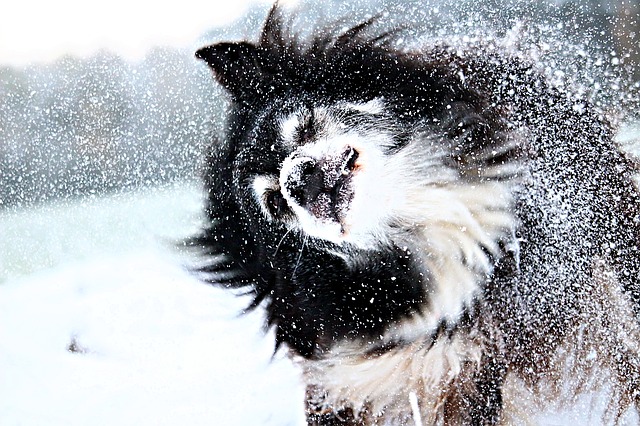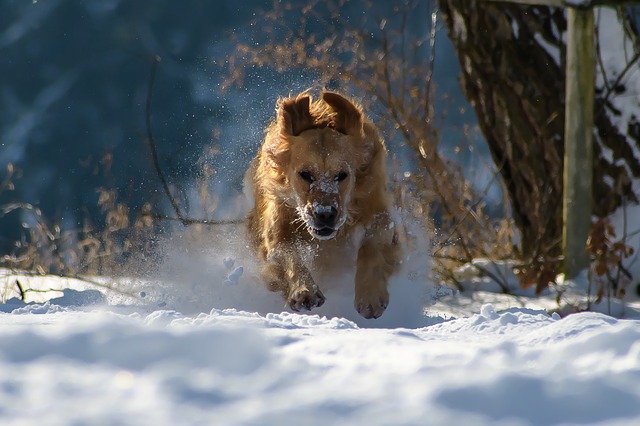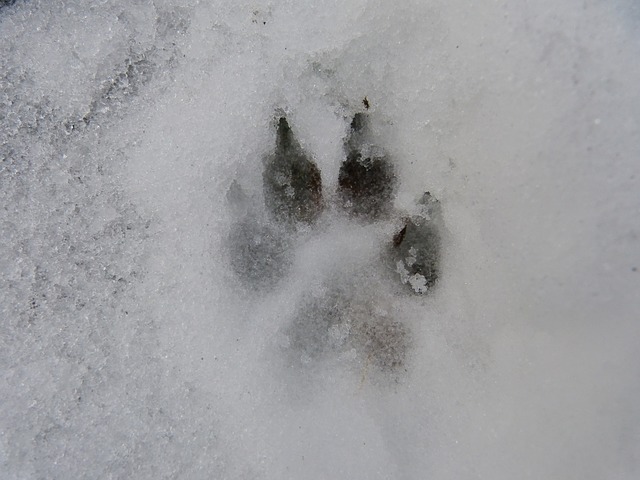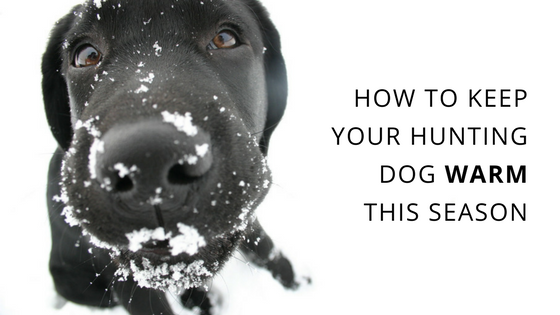Hunting season is upon us for many parts of the country. The leaves are more beautiful than ever, the pheasants are cackling through the crisp fall air, and local waterfowl are slowly being replaced by birds moving south. As temperatures continue to drop, we break out our winter gear, but what about our gun dogs? Let’s take a look at how to keep your hunting dog warm so you and your dog can enjoy a long season with a plentiful harvest of birds. A dog excited about chasing birds may not pay attention to their cold paws. That’s where you come in. If we want our bird dog to hunt through harsh, cold temperatures, they need our help in keeping warm.
How to Keep Your Hunting Dog Warm

General Guidelines
Most dogs will be fine as long as the temperature is above 45°F. Below that, the short-haired “purse dogs” will start shivering. Experts recommend not leaving any dog outdoors full-time when the temperature drops below 0°F. Consider the type of hunting you’ll be doing. A dog chasing pheasants through a cornfield will keep much warmer than a dog soaking wet, sitting in a blind.
Warning Signs
If a dog gets to cold, he or she may exhibit the following symptoms:
Mild signs:
- Shivering
- Weakness
- Whining
- Inattentiveness
- Seeking warm place to burrow
Moderate signs:
- Low blood pressure
- Stupor
- Shallow breathing
- Slow breathing
- Muscle stiffness
Severe signs:
- Comatose
- Inaudible heartbeat
- Dilated, fixed pupils
- Great difficulty breathing

Understand Dog Body Temperatures
To help our gun dogs stay warm this hunting season, it’s important to have a firm understanding of our dogs’ anatomy, health, features, and more. Let’s consider some basic factors that influence a dog’s body temperature.
Coat Type: Ranging from hairless to double coats, a dog’s fur has a significant effect on ability to endure cold temperatures. Imagine the difference between you wearing a hoodie and an extra-insulated parka. Some dog coats, like a Labrador Retriever’s, even resist water.
Coat Color: Coat color can influence body temperature. On clear days, a dog with a darker coat can soak up a significant amount of heat compared to a dog with a lighter coat.
Health: As expected, an ill dog cannot regulate body temperature as well as a healthy dog. For more information on keeping your dog healthy and ready for hunting season, check out AKC’s guide to dog health.
Age: Pay especially close attention to older and younger dogs, as they will have a harder time regulating their body temperatures.
Size: Smaller dogs, in general, don’t handle the heat as well as larger dogs. Body fat also plays a role in body heat. Typically, skinny dogs will have a harder time keeping warm.
Acclimation: Dogs acclimate to temperatures, too. For us, 50 degrees can feel awful in July, but it feels incredibly warm in January. If you thrust your gun dog into a sudden, extreme temperature change, watch them closely.

Steps to Keep Your Hunting Dog Warm
Try Warm Clothes: There are a variety of great dog coats designed for hunting dogs that both protect and insulate. Some are made of neoprene to help keep your dog dry, others assist with flotation to help your dog drag mallards across the pond.
Ice buildup in paws can make a dog miserable. Boots can protect from ice and other sharp objects that may show up in the field. Some dogs are more prone to pad damage than others.
Typically, it’s difficult to find any type of hat or headgear that a dog can tolerate. We recommend not trying it.
Feed a Hearty Diet: Bump up your dog’s fat and protein intake to ensure a thick, healthy coat.
Pay Attention to Paws: Every time your dog gets out of a snowy or icy situation, wipe down their paws. Trimming hair in between the paws can help reduce ice buildup. Inspect the pads for cracks and bleeding. Like mentioned above, dog boots may be beneficial for your hunting buddy.
Practice and Prepare: Help your pup get acclimated. It won’t only help your dog feel more comfortable, it may give you the opportunity to recognize your dog’s temperature limits before investing in an expensive hunting trip with your buddies.
Watch and Learn: While you practice, prepare, and hunt, keep an eye on your dog. You know better than anyone when something isn’t right. Look for the warning signs listed above. Sometimes the thrill of the hunt can keep us from attending to our dogs as well as we ought to.
Let’s commit to take extra care of our hunting dogs this season. They work their tails off to improve our hunting experience. Keeping a dog warm isn’t that complicated. With a little extra effort, you’ll have a happy gun dog no matter how far the mercury drops. Stay warm, and happy hunting!

